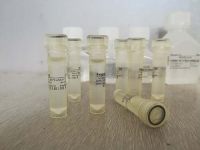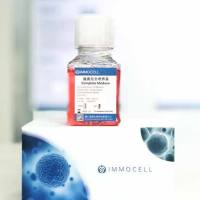人体结构
互联网
1934
| Word | Definition | Topic |
|---|---|---|
| addictive | a substance on which a person can become physically dependent | Humans as organisms |
| ADH | Anti-Diuretic Hormone | Humans as organisms |
| adrenalin | a hormone that is secreted when a person is stressed - it increases the heart and pulse rate and blood pressure | Humans as organisms |
| aerobic | with oxygen | Humans as organisms |
| alveoli | tiny air sacs in the lungs where gas is exchanged during breathing | Humans as organisms |
| amino acids | complex molecules which form the building-blocks of proteins | Humans as organisms |
| anaerobic | without oxygen | Humans as organisms |
| Antibiotics | substances kill bacteria and fungal infections | Humans as organisms |
| antibody | protein produced by the body's immune system that attacks foreign invaders (antigens) | Humans as organisms |
| antibodies | proteins produced by the body's immune system that attack foreign invaders (antigens) | Humans as organisms |
| antigens | foreign invaders in the body that trigger an immune response | Humans as organisms |
| arteries | thick-walled muscular tubes which carry blood away from the heart | Humans as organisms |
| Assimilation | the incorporation of the products of digestion into the body, where they are used to provide energy or for growth and repair of tissues | Humans as organisms |
| asthma | chronic condition involving breathlessness due to inflammation of the bronchioles | Humans as organisms |
| ATP | a high-energy chemical used in cells as an energy store | Humans as organisms |
| bile | a substance produced in the liver which emulsifies fats to prepare them for digestion | Humans as organisms |
| blood plasma | the liquid part of the blood. It contains useful things like glucose, amino acids, minerals, vitamins (nutrients) and hormones, as well as waste materials such as urea | Humans as organisms |
| bronchi | the plural of bronchus - the two major air tubes in the lungs | Humans as organisms |
| bronchioles | the many small, branching tubules into which the bronchi subdivide | Humans as organisms |
| bronchus | one of the two tubes into which trachea subdivides as it enters the lungs. The plural of bronchus is bronchi. | Humans as organisms |
| capillaries | extremely narrow tubes which carry blood around our tissues | Humans as organisms |
| carbohydrase | enzyme that breaks down carbohydrates | Humans as organisms |
| carbohydrates | food group consisting of sugars, starch and cellulose. They are vital for energy in humans and will be stored as fats if eaten in excess. In plants, carbohydrates are important for photosynthesis. | Humans as organisms |
| carbon dioxide | gaseous compound of carbon and oxygen which is a by-product of respiration, and which is needed by plants for photosynthesis | Humans as organisms |
| central nervous system | the brain and spinal cord | Humans as organisms |
| cilia | tiny hairs which line the respiratory tract. They beat continuously to move mucus and dirt up the bronchi and trachea | Humans as organisms |
| CNS | Central Nervous System (brain and spinal cord) | Humans as organisms |
| Colon | the large intestine, where all the water in our food and drink is absorbed into the blood | Humans as organisms |
| coma | a state of deep unconciousness in which a person does not respond to any external stimuli | Humans as organisms |
| common cold | a mild viral infection that causes inflammation of the airways | Humans as organisms |
| convex | curving outwards | Humans as organisms |
| co-ordination | producing a sensible response when you are stimulated. For example, when you taste something nice you salivate, you don't scratch your toe | Humans as organisms |
| denature | disable by changing the normal qualities or nature of something | Humans as organisms |
| denaturing | disabling by changing the normal qualities or nature of something | Humans as organisms |
| de-oxygenated | not containing oxygen | Humans as organisms |
| dependency | state of being mentally or physically reliant on something, especially a drug | Humans as organisms |
| diabetes | a serious disease in which the body is unable to regulate blood sugar | Humans as organisms |
| diaphragm | a large sheet of muscle that separates the lungs from the abdominal cavity | Humans as organisms |
| digestive system | system of organs are involved with the ingestion, digestion, absorption of food | Humans as organisms |
| dilated | widened or expanded | Humans as organisms |
| Duodenum | the first part of the small intestine. Bile secreted by the liver makes the contents of the duodenum alkaline and helps to emulsify (break up) the fats and oils in our food. | Humans as organisms |
| effector organ | a muscle or gland which has an effect when it is turned on by a motor neurone | Humans as organisms |
| effector | organ which has an effect when stimulated (eg muscles or glands) | Humans as organisms |
| effectors | organs which have an effect when stimulated (eg muscles or glands) | Humans as organisms |
| emulsified | convert into droplets | Humans as organisms |
| endocrine system | bodily system of glands which produce and secrete hormones into the bloodstream | Humans as organisms |
| endocrine gland | one of the glands which secrete hormones into the bloodstream | Humans as organisms |
| energy | released in respiration and required for virtually all metabolic activities in living things | Humans as organisms |
| enzymes | proteins which catalyse or speed up chemical reactions inside our bodies | Humans as organisms |
| epiglottis | small flap at the back of the tongue; it closes the top of the trachea when we swallow so that food does not go down the wrong way. (It does not always work properly; if food goes down the wrong way you cough to try to get the lump of food out of your windpipe.) | Humans as organisms |
| exhale | breathe air out | Humans as organisms |
| FSH | Follicle Stimulating Hormone, which stimulates oestrogen production and the growth of follicles (egg-sacs) in the ovary. It is secreted by the pituitary gland. | Humans as organisms |
| fatty acids | long-chain molecules made up of hydrogen and carbon atoms | Humans as organisms |
| feedback loop | bodily system in which the effect of a hormone's action or lack of action is fed back into the system, turning production of the hormone off or on. | Humans as organisms |
| fibre | non-digestible carbohydrates. Fibre is essential as a bulking agent to help food pass quickly and easily through the bowel. A lack of fibre in the diet can lead to constipation. | Humans as organisms |
| flu | (influenza) a highly contageous viral disease that can cause death | Humans as organisms |
| Gaseous exchange | transfer of oxygen from the air into our blood and carbon dioxide out of our blood into the air | Humans as organisms |
| genetic disease | disease which children can inherit from their parent/s as a result of abnormalities in their genes | Humans as organisms |
| glucoregulation | keeping a constant blood sugar level | Humans as organisms |
| glucose | a simple sugar made by the body from food, which is used by cells to make energy in respiration | Humans as organisms |
| glycerol | a soluble carbohydrate which is coverted into glucose by the liver | Humans as organisms |
| goblet cells | cells in the lining of the trachea and bronchi which make mucus | Humans as organisms |
| hormones | chemical messengers produced in glands and carried by the blood to specific organs in the body | Humans as organisms |
| hybrid vigour | the increased strength and size of a hybrid (an offsping produced as a result of breeding two genetically different organisims) compared to that of the parents | Humans as organisms |
| hydrochloric acid | a component of gastric juice secreted in the stomach. It helps chemical digestion by breaking down food and providing the optimum pH for the digestive enzyme pepsin | Humans as organisms |
| hyperglycaemia | Greek for 'too much sugar in the blood' | Humans as organisms |
| hypoglycaemia | Greek for 'too little sugar in the blood' | Humans as organisms |
| hypothalamus | the part of the brain responsible for controlling the body's reaction to temperature, hunger and thirst | Humans as organisms |
| immune system | the body's defence system against diseases and infections | Humans as organisms |
| inhale | breathe air in | Humans as organisms |
| inhalers | devices that administer medication to the airways | Humans as organisms |
| innate behaviour | the automatic response produced by reflex arcs - for example knee jerk reflex, withdrawal reflex, blinking, salivating | Humans as organisms |
| intercostal muscles | muscles between the ribs which raise the ribcage by contracting and lower it by relaxing | Humans as organisms |
| in vitro fertilisation | fertilisation outside the womb. 'In vitro' means in a test-tube (or glass dish) | Humans as organisms |
| ion | positively- or negatively-charged particles - eg positively charged hydrogen, sodium and potassium atoms. Ion charge helps determine a substance's acidity or alkalinity | Humans as organisms |
| ions | positively- or negatively-charged particles - eg positively charged hydrogen, sodium and potassium atoms | Humans as organisms |
| kidney | one of two organs in humans which extract impurities from the blood | Humans as organisms |
| LH | Luteinising Hormone, secreted by the pituitary gland, which stimulates ovulation. | Humans as organisms |
| lactic acid | a toxic chemical produced during anaerobic respiration | Humans as organisms |
| learnt behaviour | complex behaviour which is aquired through experience. We don't all respond in the same way to a specific stimulus - for example some people don't eat chocolate cake because they have learnt that it makes them ill, even though they like the taste. | Humans as organisms |
| liver | organ which constitutes the largest gland in the body. It produces bile to aid the digestion of fats, stores glucose in the form of glycogen, and helps break down proteins and carbohydrates | Humans as organisms |
| lymphocytes | white blood cells which attack pathogens by producing antibodies | Humans as organisms |
| metabolic activities | the biochemical activities that occur within the body to keep us alive | Humans as organisms |
| metabolic waste | harmful by-products of metabolic processes | Humans as organisms |
| metabolism | the sum of all chemical processes taking place in our cells, and the rate at which these proceed | Humans as organisms |
| mineral salts | inorganic chemical compounds | Humans as organisms |
| motor | motor neurones carry messages out of the CNS to effector organs | Humans as organisms |
| mucus | slimy white protein which lines the respiratory tract and alimentary canal | Humans as organisms |
| mucus membranes | thin lining tissues which secrete mucus | Humans as organisms |
| neurone | a nerve cell. It carries an electrical message or impulse when it is stimulated | Humans as organisms |
| oestrogen | female hormone secreted by the ovaries | Humans as organisms |
| Osmoregulation | process of keeping a constant amount of water and salts in the blood | Humans as organisms |
| ovaries | a pair of organs in the female reproductive system where ova (eggs) are produced | Humans as organisms |
| oxygen | gaseous element making up about 20% of the air, which is needed by living organisms for respiration | Humans as organisms |
| oxygen debt | the amount of extra oxygen required by the body for recovery after vigorous exercise | Humans as organisms |
| oxygenated | containing oxygen | Humans as organisms |
| palpitations | forceful or irregular heartbeats | Humans as organisms |
| pancreas | large gland located in the abdomen near the stomach which produces digestive enzymes and the hormone insulin | Humans as organisms |
| parasites | an organism that lives in or on another organism | Humans as organisms |
| passive immune system | the body's natural barriers which are always there, eg the skin | Humans as organisms |
| peristalsis | wave-like muscular contractions in the smooth wall of the gut which move food through the alimentary canal | Humans as organisms |
| pH | scale of acidity/alkalinity. pH below 7 = acidic, pH above 7 = alkaline | Humans as organisms |
| photoreceptors | the rods and cones of the retina - they respond to light stimuli | Humans as organisms |
| plasma | liquid, non-cellular part of the blood | Humans as organisms |
| platelets | white blood cell fragments which circulate in the blood and assist in clotting | Humans as organisms |
| precipitate | a suspension of particles in a liquid (formed when a previously dissolved substance becomes insoluble) | Humans as organisms |
| progesterone | female hormone secreted by the ovaries | Humans as organisms |
| proteins | organic compounds made up of amino acid molecules. One of the three main food groups, proteins are needed by the body for cell growth and repair. | Humans as organisms |
| protein synthesis | manufacturing of proteins | Humans as organisms |
| protozoan | a minute, usually single-celled, organism which does not photosynthesise. Plural is protozoa | Humans as organisms |
| protozoa | minute, usually single-celled, organisms which do not photosynthesise. Singular is protozoan or protozoon | Humans as organisms |
| relay neurones | these nerve cells carry messages around the CNS | Humans as organisms |
| reactants | substances present at the start of a chemical reaction | Humans as organisms |
| reagent | chemical used in a laboratory test | Humans as organisms |
| receptor cells | specialised cells which react to stimuli and convey impulses down nerves | Humans as organisms |
| receptor | organ which recognizes and responds to stimuli | Humans as organisms |
| receptors | organs which recognize and respond to stimuli | Humans as organisms |
| red blood cells | cells which contain haemoglobin and carry oxygen | Humans as organisms |
| reflex action | an involuntary reaction that happens rapidly in response to a stimuli eg moving your hand from a flame | Humans as organisms |
| reflex arc | a nerve pathway which produces an automatic response | Humans as organisms |
| refracted | deflected from a straight path; bent | Humans as organisms |
| renal artery | carries blood to the kidneys | Humans as organisms |
| renal vein | takes blood away from kidneys | Humans as organisms |
| response | reaction to a stimulus; the effect produced by an effector organ - for example you salivate when you taste something | Humans as organisms |
| retina | the inside layer in the eye that is responsive to light | Humans as organisms |
| RNA | (Ribonucleic acid) - it converts the genetic information stored in DNA into proteins | Humans as organisms |
| Saliva | Fluid secreted by glands in the mouth which moistens and softens food. It contains the enzyme amylase which digests starch, and a lubricant which makes food slippery and easy to swallow. | Humans as organisms |
| salts | class of chemical compounds, mostly metallic oxides. Examples are sodium chloride, potassium chloride, and magnesium sulphate | Humans as organisms |
| sense organ | organ which recieves and responds to a stimulus - for example, the eye, ear, taste buds, skin, nose | Humans as organisms |
| sensory | sensory neurones carry messages from sense organs into the CNS | Humans as organisms |
| stereoscopic vision | having two eyes side-by-side, each delivering a slightly different view to the brain. It enables humans to judge distance, depth and speed. | Humans as organisms |
| stimuli | things that set off a reaction in the nervous system - for example, light, heat, sound, gravity, smell, taste, or temperature. The singular is stimulus | Humans as organisms |
| stimulus | something that causes a response; a sense impression that sets off a reaction in the nervous system - for example, light, heat, sound, gravity, smell, taste, or temperature. The plural is stimuli. | Humans as organisms |
| substrate | a substance on which enzymes act | Humans as organisms |
| synapse | the gap between two neurones across which nerve signals must jump | Humans as organisms |
| synthesised | made or put together | Humans as organisms |
| target organs | the organs which hormones take effect upon | Humans as organisms |
| testosterone | the main male sex hormone, secreted in the testes | Humans as organisms |
| thermoregulation | the process of keeping a constant body temperature | Humans as organisms |
| thorax | the chest, containing the heart and lungs and encased by the ribs | Humans as organisms |
| trachea | the windpipe or tube from the back of the mouth to the top of the lungs | Humans as organisms |
| ultramicroscopic | too small to be seen with a normal microscope. (Electron microscopes are usually used to study viruses) | Humans as organisms |
| urea | a nitrogenous waste product resulting from the break down of proteins. It is excreted in urine | Humans as organisms |
| uterus | aka womb - this is where the fertilised ovum develops | Humans as organisms |
| Vaccines | substances containing disabled antigens of a particular disease, usually administered via injection. Vaccines stimulate the body to produce antibodies to provide immunity against that disease. | Humans as organisms |
| vaccinating | immunising by introducing harmless pathogens; innoculating | Humans as organisms |
| vasoconstriction | narrowing of the blood vessels | Humans as organisms |
| vasodilate | the widening of blood vessels | Humans as organisms |
| vasodilation | widening of the blood vessels | Humans as organisms |
| veins | thin-walled, valved tubes which carry blood back to the heart | Humans as organisms |
| viruses | ultramicroscopic non-cellular organisms that replicate themselves inside the cells of living hosts | Humans as organisms |
| vitamins | organic substances which are essential in small amounts to regulate the metabolism and maintain the immune system | Humans as organisms |
| voluntary action | an action which is not forced or a reflex | Humans as organisms |
| white blood cells | cells which fight disease by making antibodies or engulfing germs | Humans as organisms |
| womb | the organ in females in which babies are concieved and carried. Also called the uterus | Humans as organisms |









